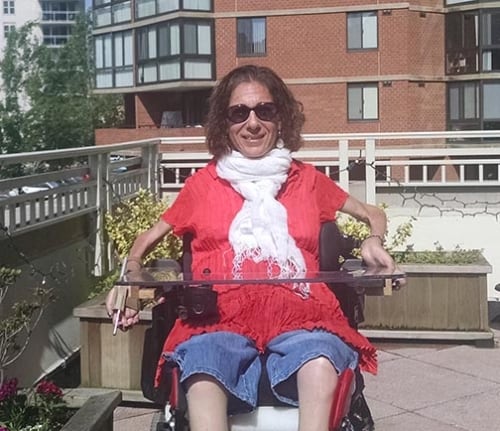Travel Opportunities for People with Disabilities Have Increased, but Is it Too Late For Me?
September 21, 2016
Sheri Denkensohn-TrottTravel opportunities for people with disabilities have markedly increased over the last decade. But I wonder if it is 20 years too late for me.
As a quadriplegic injured for 33 years, it is not easy to deal with activities of daily living in my home environment, and travel adds a whole new level of obstacles. And my body, more often than not, reacts negatively to a different bed, shower, diet, and the list goes on. My shoulders hurt, my stomach feels lousy and being in unfamiliar surroundings makes me much less independent.
Don’t misunderstand me, traveling when I was in my 20s was no picnic, but I could easily fly in my folding manual chair and rent a wheelchair at my destination, my skin was more durable, my shoulders didn’t ache, and I could eat and drink anything without a second thought. I traveled extensively for work and play. Still far from perfect, but I found it fun and exciting.
I have so many destinations on my bucket list. And all are increasingly accessible. Cruises, national parks, and sporting events like the Kentucky Derby and NCAA men’s basketball finals.
But Can My Aging Body Do It?
Packing is an ordeal, and that is before I even leave home. Clothing, medical supplies, battery charger, nebulizer, medicine, supplements, and special foods. Plus, I need my own powerchair to avoid skin breakdown and I still have not found a travel shower/commode chair that is comfortable and easy to use. And even though I am using my own powerchair, there is always the chance, like what happened to me late one evening on a recent trip, that out of the blue a function on the chair changes and it won’t move. Fortunately, my personal aide was able to move wires around and solve the problem. Otherwise I would likely have been on the phone with my medical equipment provider for hours on end trying to resolve the issue!
There are also space and privacy issues to deal with when you require a caregiver. For example, on a recent trip, my husband, also a wheelchair user, and I slept in one room and my caregiver slept in the room next door, separated by only a door that had to be left open in case I needed something at night. And then there was only one bathroom for all three of us and it was pretty tight! But to be fair, the unit we stayed in was termed “wheelchair-friendly” and not “wheelchair-accessible;” not sure how to interpret that but it was definitely better than nothing! And the price was great.
I’m not trying to be a downer but the realities of traveling with a disability seem to be absent from the majority of articles and media attention given to the physical access about the destination. While that is certainly important (along with airline access and that of other transportation modes), the obstacles of daily life as a traveler with a disability can feel daunting and depressing. For me, aging has made it more difficult. Multiple chronic conditions make it hard to have my body function properly during travel and not suffer from after-effects when I return home.
I want to travel and I want to figure out how to minimize the challenges. The question that remains is whether my aging body can do it. So, I’m faced with the reality that I’ll just have to keep trying to figure out if my future will be filled with vacations or staycations. For now, I’ll stay hopeful and keep an open mind.
Support New MobilityWait! Before you wander off to other parts of the internet, please consider supporting New Mobility. For more than three decades, New Mobility has published groundbreaking content for active wheelchair users. We share practical advice from wheelchair users across the country, review life-changing technology and demand equity in healthcare, travel and all facets of life. But none of this is cheap, easy or profitable. Your support helps us give wheelchair users the resources to build a fulfilling life. |



Recent Comments
Kevin Hoy on TiLite Releases Its First Carbon Fiber Wheelchair
tuffy on NYDJ Launches Women’s Adaptive Jeans on QVC
Lisa Cooley on How to Fund an Expensive Adaptive Vehicle